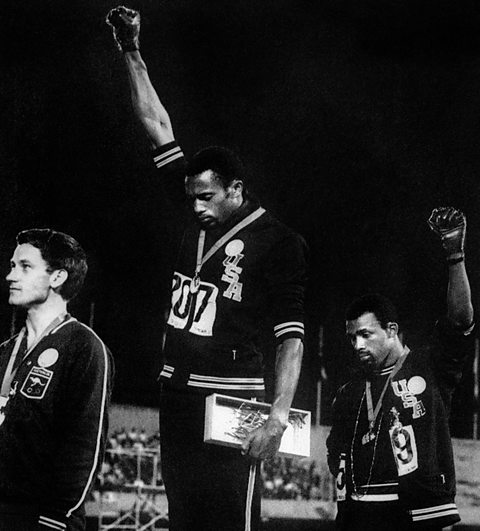The Black Power movement, 1963-1970
In the 1960s, a new militantUsing strong or violent action in support of a political cause. organisation emerged. This was Black Power. It emphasised:
- the importance of black people in bringing about change without relying on white peopleвҖҷs help
- the failure of non-violence to create concrete change in the lives of black people
- the need for black people to have political power, including more black elected officials and black people in senior positions in institutionsAn organisation that performs a specific function in society, such as a police force or board of education.
- the poor economic conditions most black people suffered and the need for better-paid employment
These ideas helped to influence new movements, such as the Revolutionary Action Movement, which planned to start black rebellions in US cities. The ideas also shifted the emphasis of civil rights campaigning away from the South and towards the entire USA.
Stokely Carmichael
Stokely Carmichael made the term вҖҳBlack PowerвҖҷ popular. His early campaigning was with the Student Nonviolent Coordinating Committee SNCCStudent Nonviolent Coordinating Committee initially promoted non-violent protest. , when he worked to register voters during the Mississippi Freedom Summer Project of 1964. He went on to found the Lowndes County Freedom Organization, which aimed to help black people win political elections.
As Carmichael continued his work, he found non-violence to be ineffective in the face of violence from white people. This changed his attitude. When he became chair of the SNCC in 1966, he abandoned its non-violent approach. He also supported the idea of black nationalismThe idea that black people should be proud of their race and rely on each other to improve their lives, rather than accept help from white people.. His views were popular with many black Americans who faced continued discriminationTo treat someone differently or unfairly because they belong to a particular group. and experienced only slow change.
Black Power protests
The protests of the late 1960s were strongly influenced by the idea of Black Power and its followers. In 1966, James Meredith planned a 220-mile March Against Fear across the South. On the second day, he was shot and hospitalised. King and Carmichael took over leadership of the march, but they had very different views on how changes should be achieved. Carmichael rejected non-violence and the idea of working with white campaigners. White people were no longer welcome in the SNCC.

Protests like the March Against Fear showed that the civil rights movement was now split. Black Power was becoming increasingly popular, as the earlier non-violent approach was seen as too focused on the South and too slow. The idea of more militant action became even more popular as a result of media coverage.
One well-known example of media attention towards Black Power was the 1968 Olympics. Two black track athletes, Tommie Smith and John Carlos, raised a single black-gloved fist during the medal ceremony after taking gold and bronze in the menвҖҷs 200m. This was the symbol of Black Power and it was seen around the world. The men were jeered at by Americans in the crowd and later received death threats. They were banned from future Olympics. But their actions gave Black Power worldwide publicity.
The Black Panther Party
CarmichaelвҖҷs views inspired the foundation of the Black Panther Party in Oakland, California, in 1966. The party had a ten-point plan to improve the social and economic position of black people. However, it became best known for its armed patrols, which followed police officers to stop police violence against black Americans. The patrols, in which members dressed in combat clothing, led the media to present the Black Panthers as violent, dangerous people. This limited the level of national support they received.
In 1967, the Black Panthers led an armed march to the California state capital to stop a new gun law. This resulted in the arrest of its leaders. Following these events, the organisation decided to focus more on its social work, including:
- setting up community schools
- offering legal advice and services
- providing healthcare and support for the poor
Their work was important because it met the needs of economically disadvantaged black people in urban areas outside the South, whom the traditional civil rights movement had not focused their attention on.